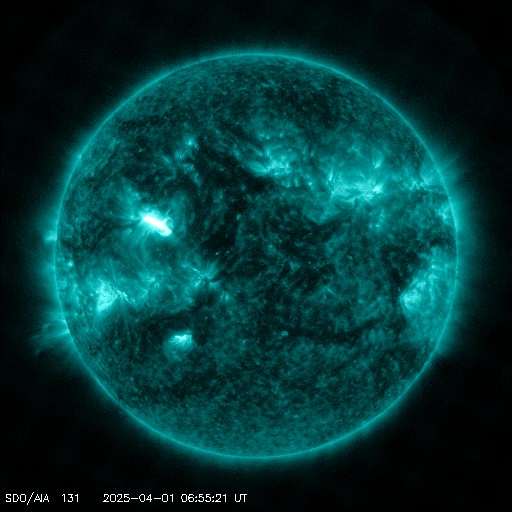Viewing archive of Tuesday, 25 February 2014
Geophysical report
Any mentioned solar flare in this report has a scaling factor applied by the Space Weather Prediction Center (SWPC). Because of the SWPC scaling factor, solar flares are reported as 42% smaller than for the science quality data. The scaling factor has been removed from our archived solar flare data to reflect the true physical units.
Solar and Geophysical Activity Summary 2014 Feb 25 0245 UTCPrepared by the NOAA © SWPC and processed by SpaceWeatherLive.com
Joint USAF/NOAA Solar and Geophysical Activity Summary
SGAS Number 056 Issued at 0245Z on 25 Feb 2014 This report is compiled from data received at SWO on 24 FebA. Energetic Events
Begin Max End Rgn Loc Xray Op 245MHz 10cm Sweep 0247 0247 0247 140 1103 1117 1142 N00E00 M1.2 Sf 1200 1205 1210 M1.3 930 1254 1622 IV 1312 1312 1312 100 1444 1449 1457 1982 S11E63 C5.0 Sf 950 29 II 1900 1900 1901 330
B. Proton Events
None
C. Geomagnetic Activity Summary
Quiet to Unsettled
D. Stratwarm
Not available
E. Daily Indices: (real-time preliminary/estimated values)
10 cm 171 SSN 205 Afr/Ap 005/005 X-ray Background B9.1 Daily Proton Fluence (flux accumulation over 24 hrs) GT 1 MeV 1.1e+05 GT 10 MeV 1.0e+04 p/(cm2-ster-day) (GOES-13 satellite synchronous orbit W75 degrees) Daily Electron Fluence GT 2 MeV 4.90e+06 e/(cm2-ster-day) (GOES-13 satellite synchronous orbit W75 degrees) 3 Hour K-indices Boulder 1 1 2 2 2 2 2 1 Planetary 1 1 1 2 1 2 2 1
F. Comments
None
All times in UTC
Current data suggests there is a slight possibility for aurora to appear at the following high latitude regions in the near future
Gillam, MB, Yellowknife, NTLatest news
Latest forum messages
Similar AR 3664 vs AR 4048 ??? 7AR4046 143AR4048 60Temporary Topic - Ongoing Solar Proton Events 5Unspecified geomagnetic activity 2176
More topicsSupport SpaceWeatherLive.com!
A lot of people come to SpaceWeatherLive to follow the Sun's activity or if there is aurora to be seen, but with more traffic comes higher server costs. Consider a donation if you enjoy SpaceWeatherLive so we can keep the website online!

Latest alerts
07:15 UTC - 10cm Radio Burst
Begin Time: 01/04/2025 06:45 UTC Maximum Time: 01/04/2025 06:45 UTC Duration: 1 minutes. Peak flux: 190 sfu
07:06 UTC - Solar flare
Strong M5.61 flare
06:48 UTC - Radio Blackout
Moderate R2 radio blackout in progress (≥M5 - current: M5.36)
06:45 UTC - Radio Blackout
Minor R1 radio blackout in progress (≥M1 - current: M1.7)
02:15 UTC - Solar protons
Moderate S2 Solar Radiation Storm - Infrequent effects on HF radio through polar regions and satellite operations
Space weather facts
| Last X-flare | 2025/03/28 | X1.1 |
| Last M-flare | 2025/04/01 | M5.6 |
| Last geomagnetic storm | 2025/03/27 | Kp5 (G1) |
| Spotless days | |
|---|---|
| Last spotless day | 2022/06/08 |
| Monthly mean Sunspot Number | |
|---|---|
| February 2025 | 154.6 +17.6 |
| Last 30 days | 128.5 -22.7 |



